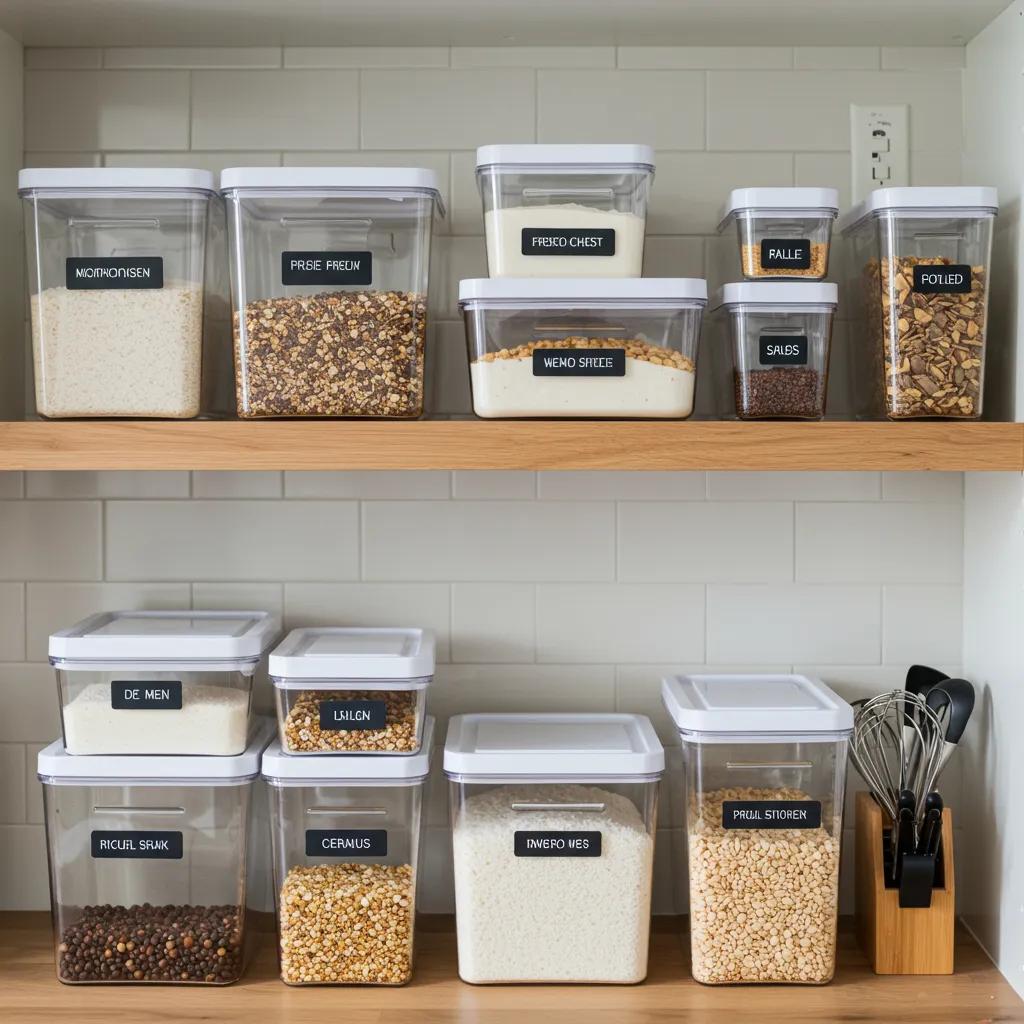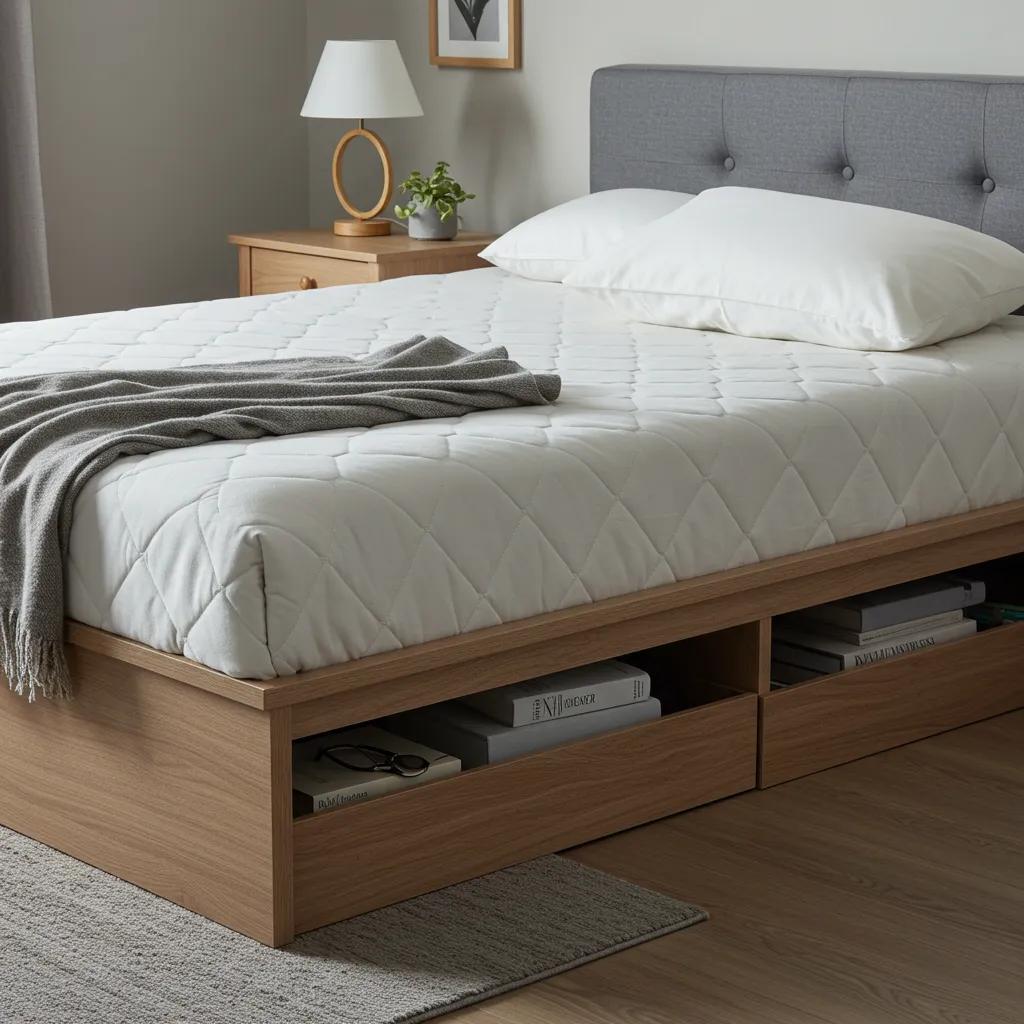
Mastering Home Organisation: Your Guide to Decluttering and Lasting Tidiness
Clearing out clutter and organising your home banishes visual chaos, lightens the mental load of daily decisions, and cultivates a peaceful sanctuary that nurtures wellbeing and boosts productivity. This guide unpacks proven decluttering strategies, practical room-by-room organisation techniques, and sustainable maintenance routines, helping you achieve a minimalist, organised home that endures, rather than just a temporary tidy-up. Many feel overwhelmed at the start; this article breaks down the process into manageable steps, exploring popular methods (KonMari, Four-Box, Ski Slope, Swedish Death Cleaning), targeted organisation tactics for kitchens, bedrooms, home offices, and children's spaces, plus maintenance rhythms to prevent clutter from creeping back. You'll also discover how professional cleaning services can support your long-term organisation goals, explore eco-friendly options that align with mindful decluttering, and learn about current trends shaping modern home organisation. Each section is packed with actionable checklists, comparison charts, and step-by-step advice to help you select a starting method, complete your initial declutter, and maintain an organised home all year round.
What Are the Best Home Decluttering Methods to Start With?
Decluttering methods are structured approaches that guide your decisions on what to keep, donate, or discard, all based on a clear principle and workflow. Each method works by reducing the mental effort involved in decision-making: sorting by category encourages consistent choices, using boxes creates immediate momentum, a gradual progression from visible to hidden clutter builds habit, and dignified downsizing addresses long-term legacy planning. The best method for you depends on your available time, emotional energy, and household goals, with some approaches suited for a dramatic, single-session overhaul and others for steady, consistent progress. Below, you'll find concise explanations of four leading methods to help you choose the one that best fits your situation.
How Does the KonMari Method Simplify Decluttering?
The KonMari method organises by category and prompts you to ask if each item "sparks joy," simplifying decisions by using emotion as the primary filter. This works because it replaces endless item-by-item debates with a clear, category-wide perspective, reducing hesitation and speeding up the process. Begin by gathering all items within a category (clothing is a great starting point), hold each item, and keep only those that evoke a positive emotional response. Store the items you keep visibly and with respect. The KonMari method is ideal for those ready for a transformative, one-time declutter and helps create a curated wardrobe or home. Occasional follow-up sessions are sufficient to maintain the system. Transitioning from KonMari's initial overhaul to regular habits makes daily upkeep effortless and prevents clutter from returning.
What Is the Four-Box Method and How Can It Help?
The Four-Box Method uses four containers—keep, donate, trash, relocate—as a triage system that forces a decisive outcome for every item, accelerating progress through small zones. The mechanism is behavioral: physically sorting items into boxes reduces indecision and maintains momentum, which is especially effective for drawers, shelves, and small rooms. Use a 20–30 minute timer for each zone to stay focused, then promptly remove the donate and trash boxes to prevent second-guessing. This method is perfect for achieving quick wins and for time-limited decluttering sessions, helping busy households turn partial progress into significant change. Implementing the four-box flow establishes a habit of categorising incoming items, which directly supports long-term organisation systems.
How Does the Ski Slope Method Work for Gradual Decluttering?
The Ski Slope Method begins with the most visible areas and progressively moves toward hidden clutter, creating a descending timeline that aligns with your energy and motivation levels. This staged approach works by delivering early visual wins that encourage continued effort and prevent burnout, especially for households with lower motivation. Plan a cadence—tackle countertops on day one, dedicate week one to closets, and month one to hidden storage—and set regular check-ins to track progress and adjust your goals. The Ski Slope method is ideal for families or professionals with limited time who need steady momentum without committing to intensive single-session decluttering. Building from visible to hidden also preserves functional order while allowing ample time for thoughtful decisions about stored items.
What Are the Benefits of Swedish Death Cleaning?
Swedish Death Cleaning is a thoughtful decluttering philosophy focused on reducing the burden on loved ones by downsizing and organising possessions in advance, motivated by legacy and practicality. The mechanism is anticipatory: by carefully choosing what to keep and documenting the significance of items, individuals simplify the future handling of their belongings while maintaining dignity. This approach is well-suited for downsizing, elder households, or anyone preparing for a major life transition. It combines practical steps—inventorying, creating a box for meaningful objects, and making donation lists—with open communication about choices. Swedish Death Cleaning prioritises quality over quantity and complements practical organisation by clarifying what truly matters, easing both the emotional and logistical aspects of decluttering.
MethodCore StepsBest ForKonMariTidy by category, keep items that spark joy, store respectfullyTransformational overhauls and wardrobe curationFour-Box MethodSort into keep, donate, trash, relocate; set timersQuick wins, small spaces, time-limited sessionsSki Slope MethodStart with visible areas, move to hidden storage over timeLow-motivation or busy schedules needing steady progressSwedish Death CleaningInventory, reduce for legacy, donate responsiblyDownsizing, elder planning, long-term simplification
This comparison chart will help you select a starting point based on your available time, emotional readiness, and household needs. Choosing a method clarifies the initial steps needed to transform a cluttered home into a maintainable system.
How Can You Organise Every Room in Your Home Effectively?
Organising room by room transforms decluttering decisions into practical systems that deliver daily utility and maintain order. Effective organisation incorporates quick wins, smart storage solutions, and maintenance tips tailored to each room's specific function, creating a structured approach at a granular level: kitchen organisation, bedroom organisation, office organisation, and children's room organisation. The practical goal is to establish routines and systems that minimise friction for frequent tasks, with labelling, zoning, and thoughtful storage prolonging the benefits of your decluttering efforts. Below are targeted tactics and a handy table you can apply immediately to each room.
What Are the Top Kitchen Organisation Tips for Busy Homes?

Kitchen organisation involves zoning tasks—prep, cooking, and cleaning—and placing tools where they are most frequently used to minimise task-switching. Practically, using clear containers and consistent labelling speeds up retrieval and prevents duplicate purchases, while designating a dedicated meal-prep station streamlines weekday cooking. Quick wins include grouping similar items together, keeping frequently used utensils within easy reach, and clearing countertops after each meal to prevent accumulation. These habits reduce daily decision-making and create an environment where meal preparation feels less daunting, supporting family routines and offering time-saving organisation hacks.
- The kitchen checklist focuses on zones and simple storage swaps: Group pantry items by usage and transfer staples into clear, labelled containers.Implement a daily counter-reset rule: a quick five-minute wipe-down and tidy after dinner.Store meal-prep tools close to your prep station to minimise search time.
These small changes add up to significant time savings and reduce stress during busy evenings.
How to Create a Clutter-Free and Relaxing Bedroom?

A clutter-free bedroom promotes better sleep hygiene by minimising visual stimuli and maintaining calm surfaces; the underlying mechanism is environmental cueing, where a tidy space signals rest and lowers cognitive load. Practical steps include rotating a capsule wardrobe to limit daily clothing choices, utilising under-bed storage for seasonal items, and establishing a nightly five-minute tidy-up routine to prevent pile-ups. Reduce bedside clutter by using a single tray for essential items and implementing a weekly laundry and donation sweep to keep surfaces clear. Establishing these simple systems strengthens sleep routines and simplifies morning decisions, leading to improved daily energy and focus.
What Are the Best Office Organisation Hacks for Productivity?
Home office organisation minimises cognitive friction by optimising workflow, clearly separating work zones from storage areas, and promoting digital decluttering. Key mechanics include effective cable management to reduce visual distractions, an inbox-zero-inspired paper handling routine, and a clear filing system for active projects. Use a standing checklist to conclude your workday—file, clear desktop, plan for tomorrow—to establish boundaries and enhance focus. Digital decluttering tips include archiving old files, implementing folder structures that mirror project stages, and scheduling brief weekly cleanups to prevent backlog accumulation.
How to Organise Kids’ Rooms to Reduce Stress and Improve Focus?
Organising children's rooms relies on simple systems that kids can easily follow; behavior-based mechanics—visual zones, toy rotation, and clear labelling—encourage ownership and reduce decision-making confusion. Implement toy rotation to keep playtime fresh, use low shelving for easy access, and employ visual labels or picture cues for younger children. Establish short daily tidy-up routines and involve children with small responsibilities to reinforce habits and lighten the parental workload. These interventions help improve focus and reduce evening chaos, supporting overall family home organisation systems.
RoomQuick Wins (15-min)Storage SolutionsMaintenance TipKitchenClear counters, group spicesClear containers, pull-out shelvesWeekly pantry checkBedroomCapsule-sort wardrobeUnder-bed bins, single-tray nightstandNightly 5-min resetOfficeTidy desktop, file current papersVertical file holders, cable clipsEnd-of-day checklistKids’ RoomSort toys into binsLow shelves, rotation boxesWeekly family tidy session
This room-by-room table highlights quick wins and maintenance strategies that keep systems functional and align with the decluttering methods introduced earlier.
How Does Professional Home Cleaning Support an Organised Home?
Professional home cleaning complements decluttering by maintaining clean surfaces, preventing grime that can undermine organised systems, and freeing up homeowner time for essential maintenance tasks. The mechanism is service-as-support: cleaning professionals remove dust, allergens, and accumulated dirt that can make storage systems less effective and surfaces harder to keep clean. Regular cleaning protects your storage investments (like drawer dividers and labelled containers) from wear and residue, and professional teams can use eco-friendly products that align with sustainable decluttering and donation workflows. The practical outcome is longer-lasting organisation, fewer emergency deep cleans, and more predictable upkeep rhythms that maintain a tidy home.
Why Is Regular Professional Cleaning Essential After Decluttering?
Regular professional cleaning preserves the results of your decluttering efforts by eliminating the grime and dust that accumulate in high-use areas and around newly organised storage solutions. This preservation mechanism reduces the frequency of disruptive deep cleans and reinforces daily habits because surfaces remain easier to maintain. Time-saving is a core benefit: homeowners spend minutes per day on upkeep rather than hours on restorative cleaning, significantly increasing the likelihood of long-term success. Scheduling periodic professional visits creates a maintenance backbone that keeps your home functional and supports the organising systems you’ve implemented.
Service TypeWhat It Addresses Post-DeclutterFrequency RecommendationRegular CleanSurface dusting, vacuuming, routine maintenanceWeekly or biweeklyDeep CleanBaseboards, grout, behind appliances after overhaulQuarterly or post-declutterEco-friendly CleanLow-residue products, safe for textiles and kidsAs needed based on household preferenceMove-out / Move-in CleanFinal clean after removal or before move-inOne-off during transitions
This table illustrates how different cleaning services support organisational maintenance and suggests frequencies that align with the intensity of your decluttering work.
What Are the Steps to Schedule Cleaning Services for a Tidy Home?
Scheduling cleaning services begins with clarifying your upkeep goals, selecting the appropriate service type (regular, deep, eco-friendly), and preparing your home so cleaners can focus on cleaning rather than sorting. A practical six-step preparation checklist includes clearing small clutter, securing valuables, noting priority areas, listing any special instructions, making access arrangements, and confirming the service frequency. Communicate any persistent areas of concern so the cleaning team can plan targeted care that protects your organising systems. When scheduled consistently, professional cleaning becomes an efficient maintenance tool that complements the decluttering methods and room systems you employ.
This service workflow naturally leads into deciding how to start when you feel overwhelmed by clutter and where easy tactics can create momentum before scheduling help or deep cleans.
After this section: a brief practical note. For homeowners in the Denver Metro Area seeking professional cleaning as a maintenance solution, Snow Maids, LLC offers house cleaning and eco-friendly cleaning options with an emphasis on maintaining organised homes; their process highlights easy booking and free estimates to coordinate recurring or post-declutter visits.
How Can You Maintain a Decluttered and Organised Home Year-Round?
Maintaining organisation year-round relies on small daily habits, a clear seasonal cadence, and sustainable donation and recycling workflows. The mechanism blends habit formation with scheduled reviews: daily micro-routines prevent buildup, weekly tasks stabilise order, and seasonal audits purge accumulated items before they become entrenched. Together, these practices reduce the need for disruptive overhauls and align with sustainable disposal choices that keep usable items circulating. The following sections provide specific daily habits, a sample seasonal checklist, and guidance for donating responsibly.
What Daily Habits Support Long-Term Home Organisation?
Daily habits are short routines that interrupt clutter before it takes hold and reinforce organised systems through repetition; typical practices include a five- to ten-minute evening reset and one-touch handling of incoming items. These mechanisms create low-friction maintenance: small tasks like returning items to their homes, wiping counters, and sorting mail become standard behaviours rather than occasional chores. Use habit-tracking to maintain consistency and pair tasks with existing routines—after dinner or before bedtime—to ensure high adherence. Over time, these micro-habits prevent clutter escalation and make weekly maintenance more efficient.
How to Use Seasonal Decluttering Checklists Effectively?
Seasonal decluttering involves focused audits—spring and autumn reviews—that target wardrobes, storage zones, and seldom-used items, combining cleaning and donation planning for efficient turnover. Structure your checklist by area, assign realistic time blocks, and schedule donation pick-ups or drop-offs immediately after sorting to avoid second-guessing. This cadence aligns with wardrobe rotation and holiday preparations, ensuring that storage systems adapt to seasonal needs. Pairing a seasonal audit with a professional deep clean or eco-friendly service maximises the impact and preserves your organised systems.
Where to Donate and Recycle Unwanted Items Sustainably?
Sustainable donation and recycling requires preparing items thoughtfully—cleaning them, repairing minor defects, and including clear descriptions—so charities can process them efficiently and they have greater reuse value. Identify local donation channels that accept household goods, textiles, and small furniture, and choose recycling options for non-donatable materials to reduce landfill contribution. For sensitive items, follow privacy-safe disposal steps before donation to protect personal information. These preparation steps increase the likelihood that donated items are reused and reduce waste from disposal.
Item TypeDonation PreparationRecommended DestinationClothingClean, fold, note conditionLocal charities or textile recyclersSmall furnitureClean, minor repairsThrift stores or donation centresElectronicsWipe data, include cordsElectronic recycling programsBooks/toysClean, box by age/genreLibraries or children’s charities
This table clarifies preparation steps and common destinations to make donation sustainable and practical.


Customer Testimonials
"Katy is always amazing. Next time, however, I would prefer she knock on my office door to let me know she is ready to clean my office before she goes. Thank you!"
"Amazed by their service! House looked amazing and immediately planned on scheduling a future cleaning. Estimate process and scheduling was very easy - they were available quickly to do a deep clean. You can tell they put effort into their work and the results showed. Thanks so much for a clean house!"
"Did a deep clean with Snow Maids and it was amazing sight to come home to. Can't wait to have them clean our home regularly to keep up with the day to day grind. Their team did a great job and worth it so much!"















